The Term “Natural Gas” is a Misnomer
“Natural gas is a fossil fuel energy source.” This is the first line of the U.S. Energy Information Administration’s page defining “natural” gas. The fuel is mostly made up of methane, and, similar to coal and oil, it was formed when plant and animal remains were buried hundreds of millions of years ago and heat and pressure turned them into fossil fuels. Thus “natural” gas can also be called “fossil gas” or “methane gas.”
Deposits of fossil gas can be accessed through vertical or horizontal drilling, and it is processed before it can be used for electricity generation, space heating, chemical manufacturing, or other uses.
Electric utilities have drastically increased reliance on fossil gas for electric generation, which leaves electric customers at risk of high prices and blackouts. Because of the interdependency of these two sectors, here is some background about fossil gas, trends in interactions between gas and electricity in the Southeast, and how fossil gas contributes to the climate crisis.
Fossil Gas is Causing Climate Change
Methane is the main component of fossil gas (it makes up over 95% of processed gas). Methane itself is a greenhouse gas, thus when fossil gas leaks out into the atmosphere it has a direct impact on climate change. In addition, when fossil gas is burned, the methane turns into carbon dioxide (CO2), another potent greenhouse gas driving climate change. These two greenhouse gases impact climate change differently. Methane traps more heat than CO2, but has a shorter lifespan in the atmosphere than CO2. So, simplistically, methane emissions have an outsized impact on climate change in the next few decades while CO2 has an impact over the next 100 years. Some estimates calculate that methane’s global warming potential is 27-30 times that of CO2. When calculating the impact fossil gas has on climate change, it is important to account for both the direct methane emissions from leaks along the production and transport system as well as the direct carbon dioxide emissions when it is burned as a fuel. The EPA has an online calculator tool that allow for users to compare the greenhouse gas impact of different greenhouse gases.
Fossil gas contributes to other environmental and health concerns beyond climate change. These include health concerns associated with ongoing use of gas appliances in homes and workplaces causing respiratory problems, to the potential for fires or explosions from leaks, to the water and air pollution associated with gas wells and production facilities.
Fossil Gas Production in the US
Fossil gas is transported through pipelines under pressure: Large interstate pipelines carry gas across a region or from one region to another; and then smaller pipelines take the gas from those large pipelines to the ultimate customers. Fossil gas can also be stored in designated storage facilities, usually underground facilities like depleted gas and oil fields, salt caverns, and aquifers.
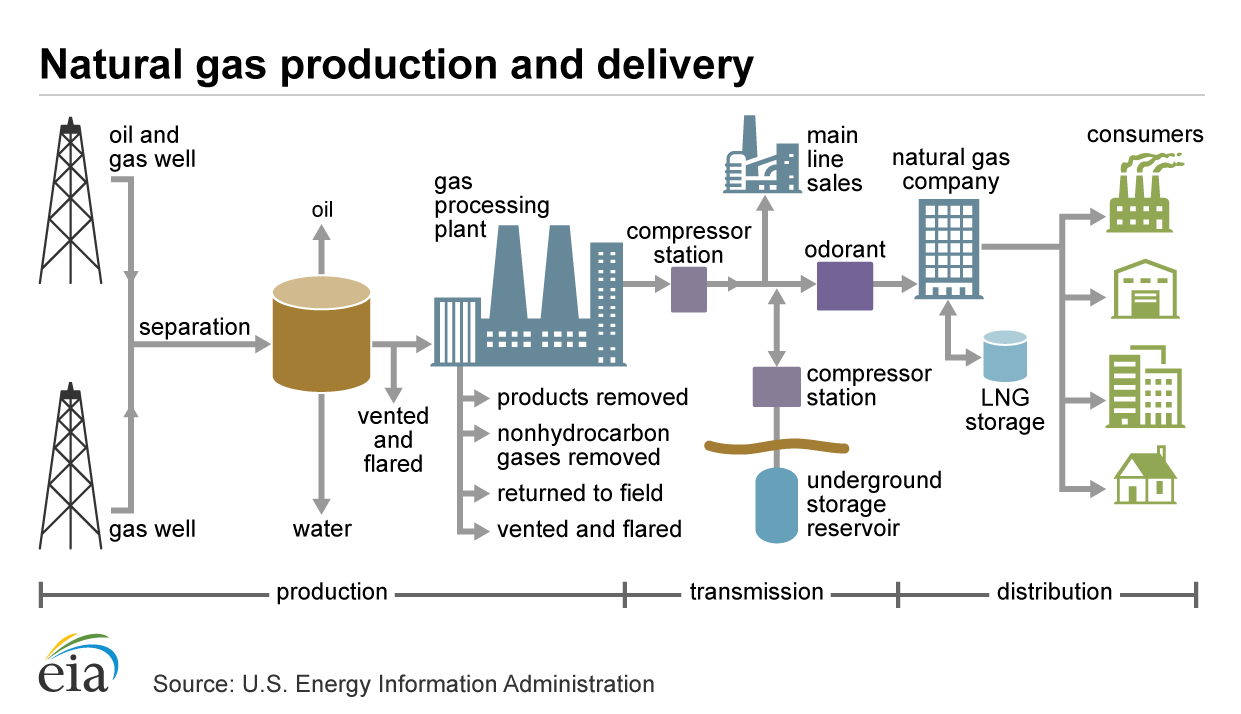
The United States is a major producer of fossil gas, but not all states in the US produce gas. The prolific use of horizontal drilling and hydraulic fracturing, sometimes just called “fracking,” in the mid-2000s led to increases in production in shale gas formations in mid-Atlantic states that previously had not been major gas producing states. Today most of the gas produced in the U.S. comes from shale gas, and the largest plays are the Marcellus (in Pennsylvania, Ohio, and New York), Permian (in Texas and New Mexico), and Haynesville (in Louisiana and Texas).
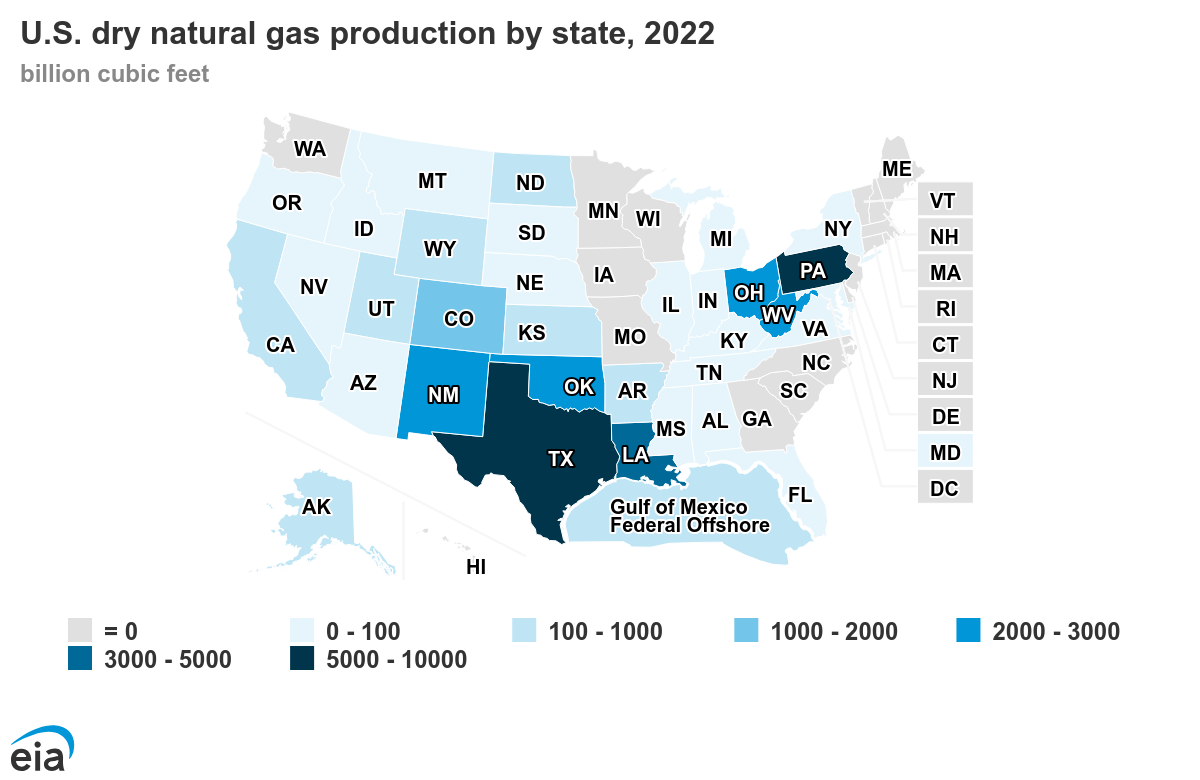
Fracking led to a dramatic increase in gas production, that in turn dropped gas prices. Gas prices remained low until spikes in the last few years associated with changes in demand, global sociopolitical events (like the war in Ukraine), and other factors.
Fossil Gas Trends in the Southeast
Over the past decade, total electricity generation in the Southeast has stayed largely stagnant, but the amount of that generation coming from fossil gas has doubled. That means about half of our electricity is now provided by fossil gas, up from about a quarter in 2010. The trend is most extreme in Florida, where approximately 75% of electricity is now gas. Most gas power plants that have been built in the last decade, called combined cycle and combustion turbine plants, are much more flexible than other steam power plants, nuclear and coal. These newer gas plants are able to turn their output up or down, called ‘ramping’ in the industry. This makes it easier for utilities to meet load, which can vary significantly minute-to-minute and season-to-season, and fill gaps that variable energy resources like solar and wind are not able to. (However, because our region has such low levels of variable resources, that has not been a major use of these gas plants to date.)
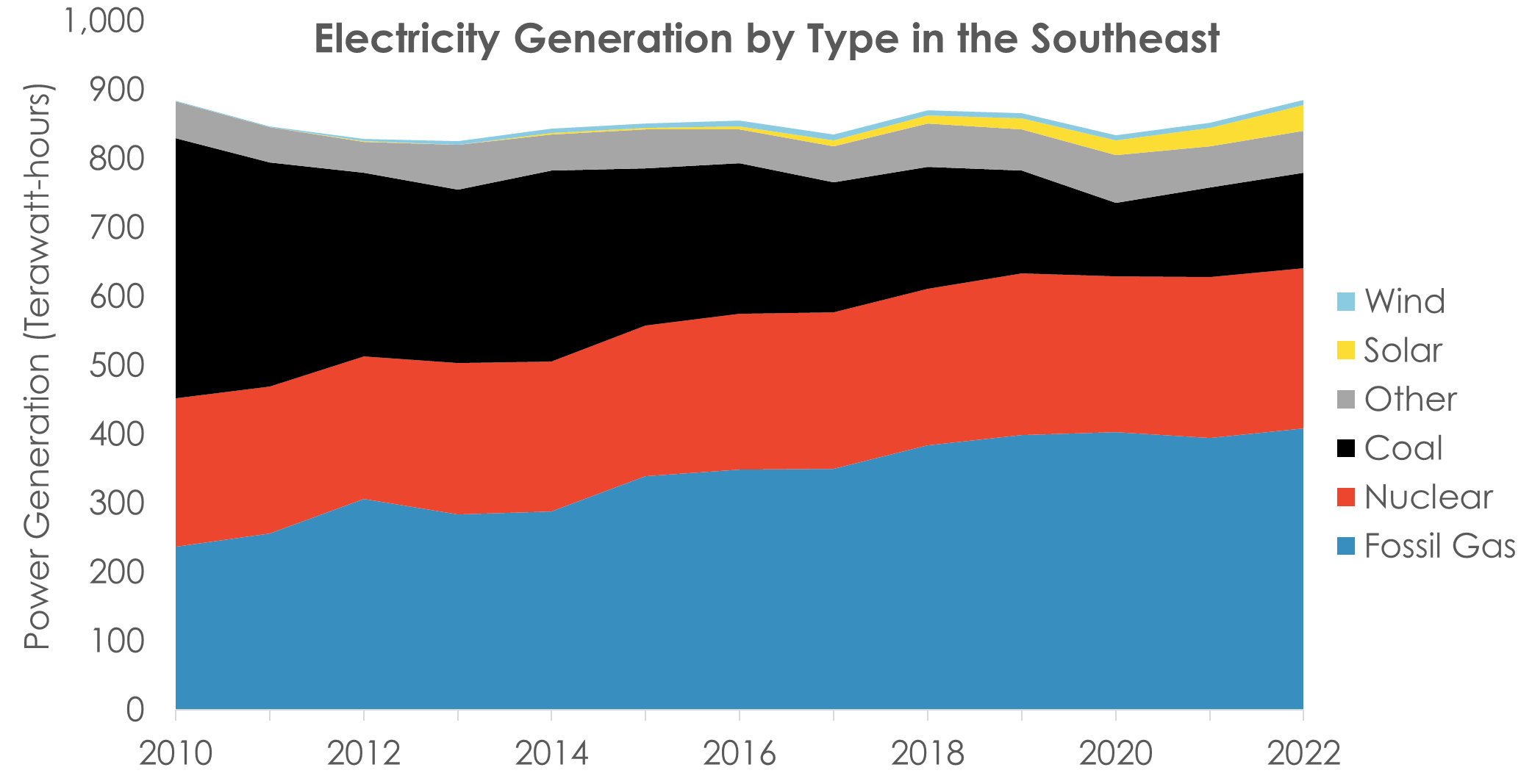
Over the same timeframe that gas doubled in the Southeast, coal generation in our region plummeted. Coal and gas are both fossil fuels, and they both generate electricity using the same principles: heat a liquid to create steam that turns a turbine. Beyond those similarities, however, there are also significant differences in how gas and coal plants are operated, and impact the electricity grid.
Before the most recent boom in constructing gas plants, in 2001, gas demand was spread across customers, including electric power plants as well as other direct users such as residential, commercial, and industrial customers for space heating, water heating, cooking, and heat for industrial processes. Since the gas boom, electric power plants now drive demand for gas. In the Southeast, total demand for fossil gas has more than doubled since 2001, and almost all of that growth (92%) is driven by gas power plants.
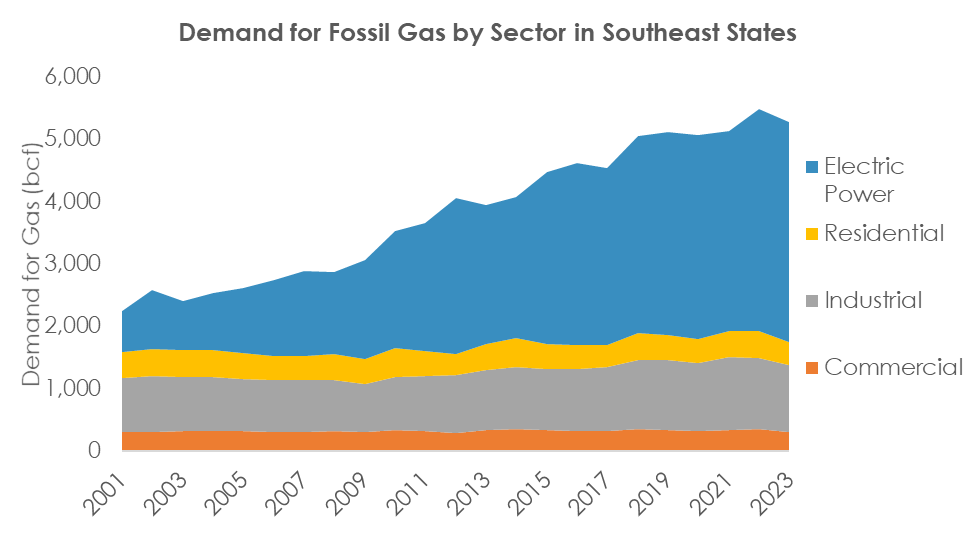
Fossil Gas makes Electricity Less Reliable
Both direct use and electric power plant demand for fossil gas are highest in winter months. In combination with the extreme growth of demand for gas for electric power plants, this leads to constraints on fossil gas supply during winter months, when the demand is highest. Another complicating factor is that during extreme weather, fossil gas production and pipelines can experience down time or loss of pressure, which limits the total amount of fossil gas available. All of this means that extreme weather can lead to price spikes or even worse, blackouts on the electricity system, like those in North and South Carolina and across the Tennessee Valley in December 2022 during Winter Storm Elliott.
Because demand from the electric sector has increased so sharply, storage is limited, and pipelines must be kept at pressure to move gas (like how water will stay in a hose if the water is turned to a trickle), when gas production dips during times of high demand, customers (including electric utilities) are asked to (or required to) reduce use. Whether or not a power plant has fuel to run on a cold winter morning depends on whether or not the electric utility secured “firm” gas. Firm gas costs more, but is more likely to show up when needed. Even firm gas can be curtailed if demand is high enough or supply low enough. If a power plant cannot get enough fuel, it cannot run, and thus can lead to electric reliability issues.
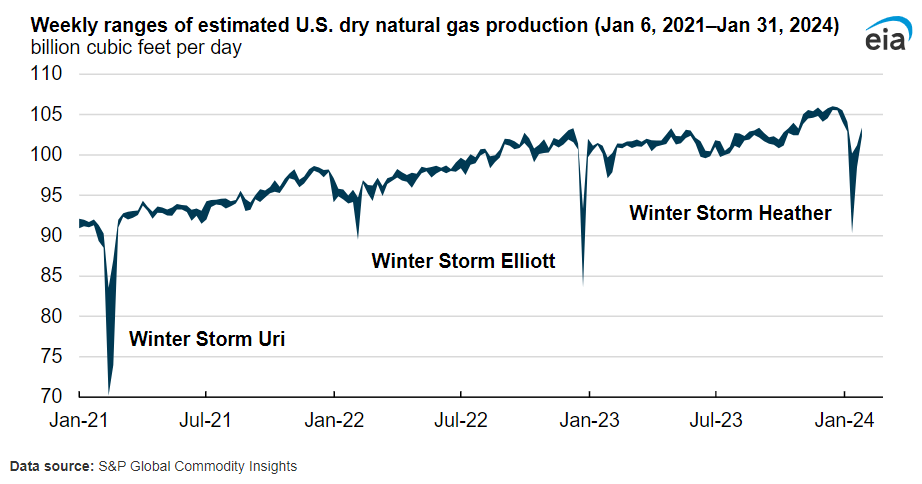
The problems during Elliott were foreseeable and preventable: in fact, Winter Storm Elliott was the fifth such event in the last eleven years. I, personally, had a very cold house as TVA implemented rolling blackouts across its territory because of plant failures and fuel issues at many gas and coal power plants. Since these events, federal electricity regulators the North American Electric Reliability Corporation (NERC) and the Federal Energy Regulatory Commission (FERC) have continued to recommend that the electric sector improve its coordination with the gas supply sector. These reliability events are a direct result of the electric sector’s sharp increase in reliance on fossil gas.
Fossil Gas Reliance Means Higher Customer Bills
Fossil gas prices are volatile. They can fluctuate with changes in supply and demand, and because it is a global market like oil, the prices we see here in the US are impacted by global events. Just as the price of gasoline goes up and down with the global oil market, so does the price of fossil gas track with the global gas market. This was particularly evident when the war in Ukraine and economic rebound from Covid led fossil gas prices to rise in 2021 and 2022. Prices had hovered in the $2-3/MMBtu range for approximately a decade before staying around $4/MMBtu in 2021 and $8/MMBtu in 2022 (2023$ from EIA).
If the price of fossil gas goes through the roof, electric customers will see their bills spike. Electric utilities have no financial incentive to keep fuel costs low because they pass 100% of these costs to their customers. When fossil gas was a small part of the overall electricity generation mix, the impact of volatile prices was somewhat muted. Now, it can be significant. We saw this in 2022 across the region, but particularly in Florida, which relies on gas for electricity even more than other Southeast states. Florida electric utilities had to go back to their regulators multiple times to adjust how they recovered fuel costs from their customers because the actual fuel costs were so much higher than the utilities had forecast.
Thus utilities, who make decisions about what kinds of power plants to build, are completely unimpacted by higher or lower fuel prices. This creates a moral hazard – where the risks associated with a decision are felt by an entity completely separate from the entity that makes the decision. Find out more about how fuel costs drive high bills in our explainer blog and whitepaper from last year.
Fossil Gas is not the Future for Electricity in the Southeast
The proliferation of fossil gas power plants across our region have made the system less reliable, increased customer bills, and significantly contributed to climate change. And the worst news is that utilities in the Southeast are not done. Two utilities in our region, TVA and Duke Energy, have the two most planned gas capacity of all utilities in the country. Other utilities, including Georgia Power, Dominion South Carolina, and Santee Cooper, are also proposing new gas power plants.
The fossil fuel and electric industries have been using the term “natural gas” for a long time. But it’s time we call this fuel what it is: a fossil fuel. So we call it fossil gas.
We at SACE see these utility plans to expand gas for what they are: a danger to health, the economy, and our everyday lives. We are advocating across the Southeast for utilities to utilize clean energy resources instead of gas. These include increasing demand-side programs like energy efficiency, demand response, virtual power plants, and time-of-use rates, as well as solar and storage from rooftop solar and garage batteries to large solar plants and utility-operated energy storage.




